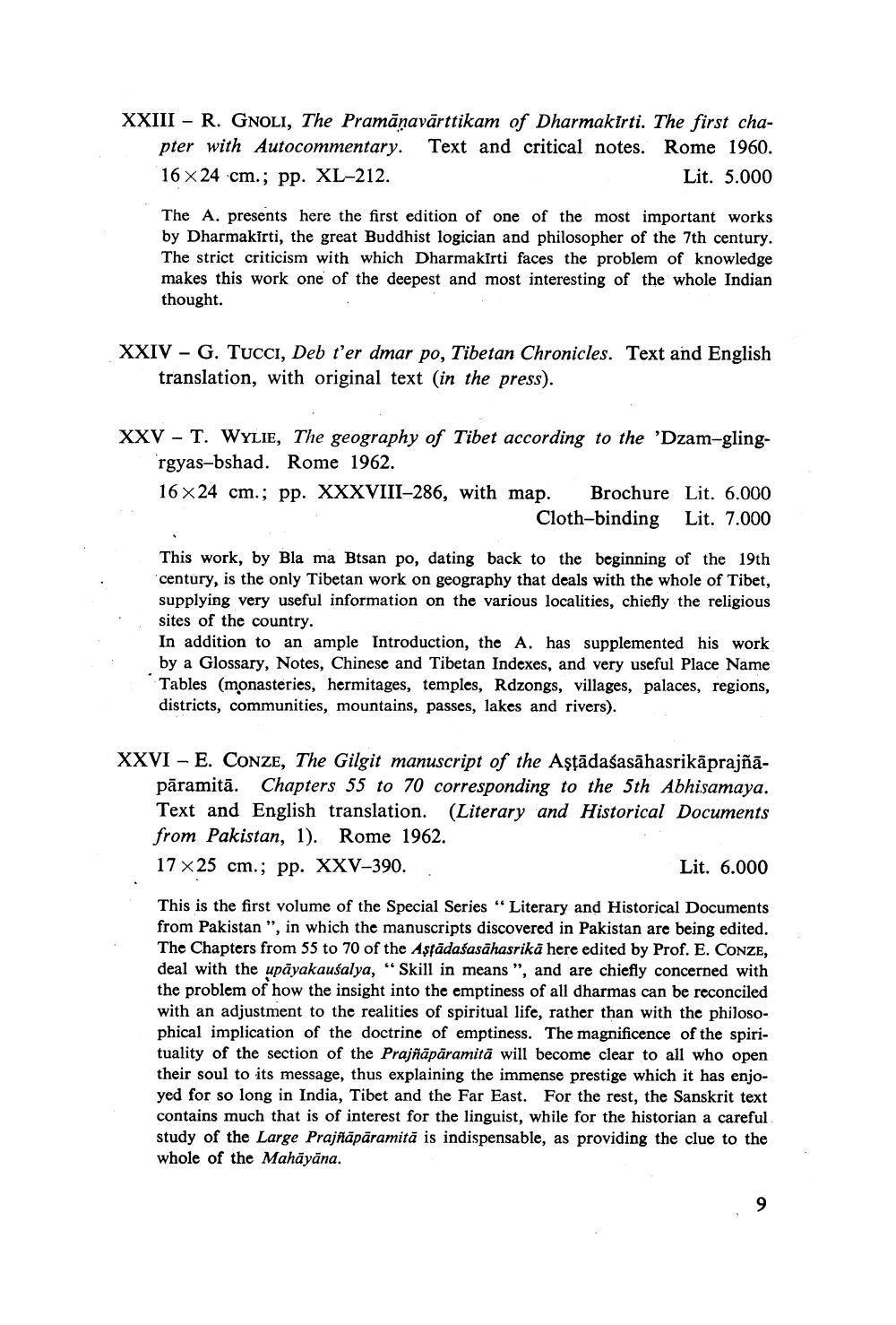________________
XXIII - R. GNOLI, The Pramāṇavārttikam of Dharmakirti. The first chapter with Autocommentary. Text and critical notes. Rome 1960.
16×24 cm.; pp. XL-212.
Lit. 5.000
The A. presents here the first edition of one of the most important works by Dharmakirti, the great Buddhist logician and philosopher of the 7th century. The strict criticism with which Dharmakirti faces the problem of knowledge makes this work one of the deepest and most interesting of the whole Indian thought.
XXIV G. TUCCI, Deb t'er dmar po, Tibetan Chronicles. Text and English translation, with original text (in the press).
XXV T. WYLIE, The geography of Tibet according to the 'Dzam-glingrgyas-bshad. Rome 1962.
16x24 cm.; pp. XXXVIII-286, with map. Brochure Lit. 6.000 Cloth-binding Lit. 7.000
This work, by Bla ma Btsan po, dating back to the beginning of the 19th century, is the only Tibetan work on geography that deals with the whole of Tibet, supplying very useful information on the various localities, chiefly the religious sites of the country.
In addition to an ample Introduction, the A. has supplemented his work. by a Glossary, Notes, Chinese and Tibetan Indexes, and very useful Place Name Tables (monasteries, hermitages, temples, Rdzongs, villages, palaces, regions, districts, communities, mountains, passes, lakes and rivers).
XXVI - E. CONZE, The Gilgit manuscript of the Aşṭādaśasahasrikāprajñāpāramitā. Chapters 55 to 70 corresponding to the 5th Abhisamaya. Text and English translation. (Literary and Historical Documents from Pakistan, 1). Rome 1962.
17x25 cm.; pp. XXV-390.
Lit. 6.000
This is the first volume of the Special Series "Literary and Historical Documents from Pakistan", in which the manuscripts discovered in Pakistan are being edited. The Chapters from 55 to 70 of the Astädasasahasrikā here edited by Prof. E. CONZE, deal with the upayakausalya, "Skill in means ", and are chiefly concerned with the problem of how the insight into the emptiness of all dharmas can be reconciled with an adjustment to the realities of spiritual life, rather than with the philosophical implication of the doctrine of emptiness. The magnificence of the spirituality of the section of the Prajñāpāramitā will become clear to all who open their soul to its message, thus explaining the immense prestige which it has enjoyed for so long in India, Tibet and the Far East. For the rest, the Sanskrit text contains much that is of interest for the linguist, while for the historian a careful study of the Large Prajñāpāramitā is indispensable, as providing the clue to the whole of the Mahāyāna.
9




